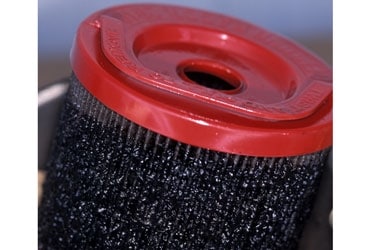
368 diesel filter
In my experience, most engine-related problems are the result of fuel issues. Fuel that’s contaminated by water, asphaltene, biological masses, or just plain dirt is the nemesis of any motor. And diesel engines are particularly susceptible to tainted fuel because of the mind-bogglingly close tolerances-measured to ten-thousandths of an inch-to which diesel fuel-system components are machined.
Taking on clean fuel from the get-go-often easier said than done-is the best and easiest defense against fuel-related problems. Once the tank and fuel system are contaminated, significant labor will be required to reverse the process. To prevent fuel contamination from the start, taking a sample before filling up is a useful practice. A glass quart jar allows you to take a look at the fuel, but better options exist. A white 1-gallon plastic pail is effective in highlighting such gross contamination as water and solids.
To check for fuel contamination before filling up, pump a quart of fuel into the bucket, then wait a minute for settling to occur. Any water or sediment should be clearly visible against the pail’s white bottom. Good-quality diesel fuel (40 cetane or higher is preferable, and it’s often required by engine manufacturers) should, if it’s destined for road use, look like honey; off-road/marine diesel is dyed red, so it should look like diluted cranberry juice. If your diesel looks like coffee, pass on it. You should certainly be able to see through a quart’s worth to the bottom of a gallon container. If your diesel passes the bucket test, you may want to fuel up without any further delay, especially if you regularly purchase fuel from the vendor. However, if the sample is suspect, try pumping the fuel through a filter funnel. This will remove the coarsest sediment, but don’t expect miracles. Large amounts of water or ultrafine dirt won’t be stopped by this rudimentary filter system. Forget using one if you’re in a hurry-they’re slow to drain.
If contaminated fuel does make it into your boat’s tank, the secondary lines of defense are a high-quality primary fuel filter and inspection ports that allow access into each baffled chamber of a fuel tank. The water and sediment in the fuel filter will alert you to the problem before it goes critical, possibly preventing damage to your engine. Manually cleaning out the tank is the only real solution if there’s serious contamination.
Additives and fuel cleaners can help if they’re used judiciously, but they can’t dissolve years of built-up asphaltene or shag carpet-like accumulations of bacterial growth. A biocide may treat the symptom but not the cause, which is water. Remember, bacteria lives in water and only eats at the fuel/water interface, the diesel-fuel diner of sorts. The long-term solution to the problem is to fit a tank with a drain or stripper tube that allows you to eliminate the water. Take the water away, and the microbes die off. Preventing contaminants and water from getting into your fuel system may take more time at the pump, but it should help you avoid untimely and expensive engine repairs later.
Steve D’Antonio (www.stevedmarineconsulting.com), a marine-industry consultant, is a regular CW contributor.








